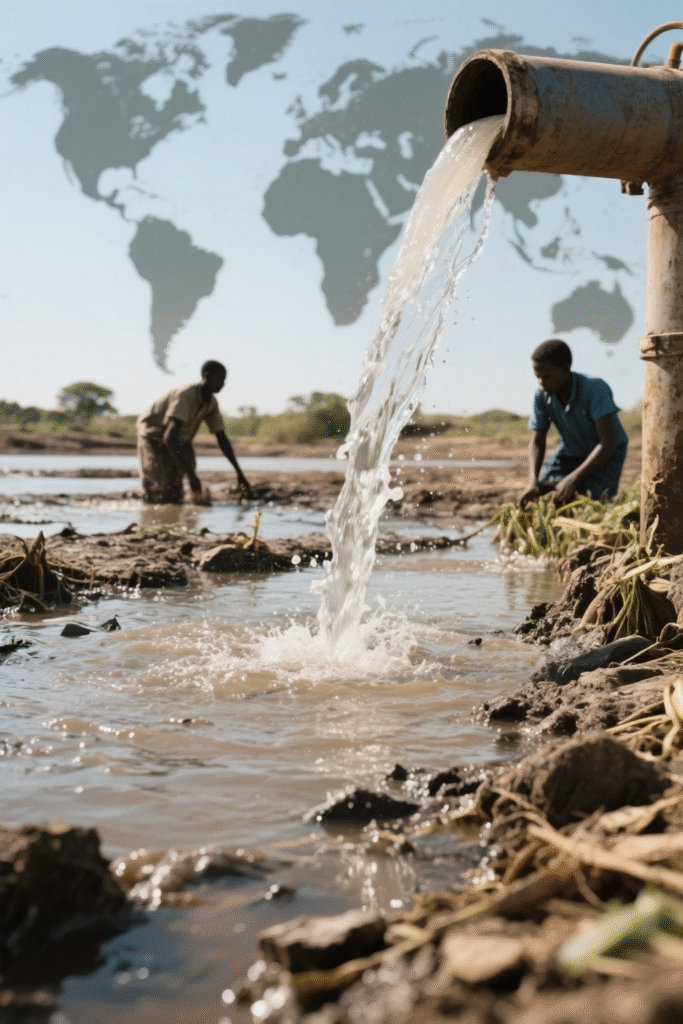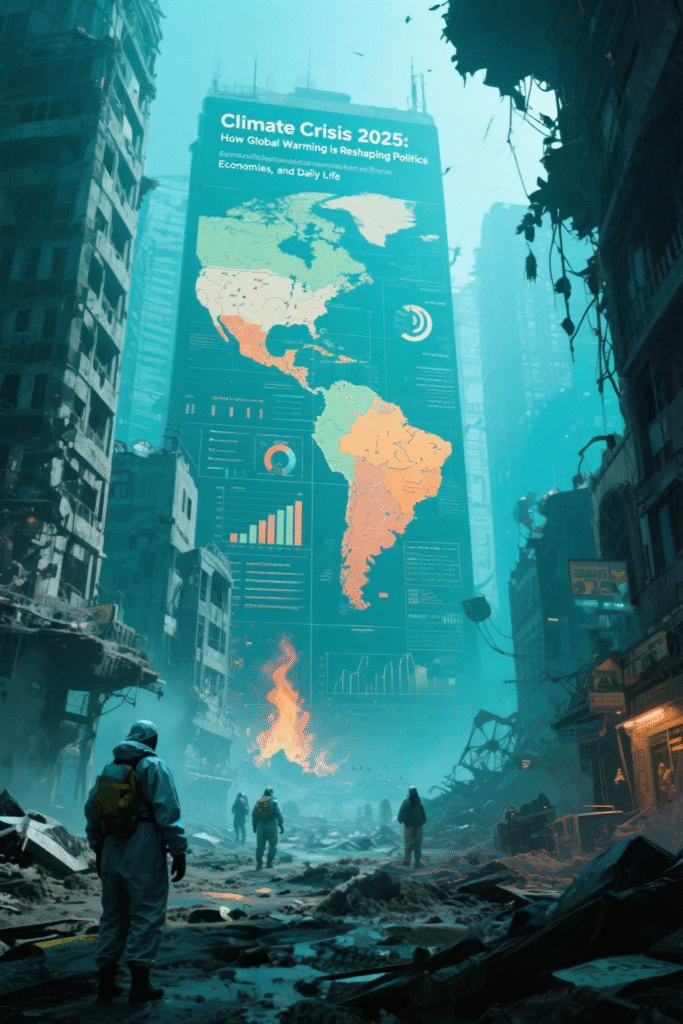
Climate Crisis in 2025: Latest Updates, Solutions & What Must Change Now
Meta Description:
The climate crisis in 2025 is worsening—rising sea levels, extreme weather, and slow policy action. Discover the latest updates, key solutions, and what governments, corporations, and YOU must do.
The State of the Climate Crisis in 2025
The climate crisis in 2025 is no longer a looming threat—it’s here. From unprecedented heatwaves to historic flooding, the Earth is undergoing rapid and dangerous changes. According to NASA, the past two years were the hottest on record. The Arctic continues to lose 13% of its ice per decade, threatening sea level rise and global weather patterns.
As nations scramble to meet the goals of the Paris Agreement, many are falling short. With climate tipping points fast approaching, urgent collective action is no longer optional—it’s mandatory.
Record-Breaking Heatwaves & Extreme Weather
This year has seen record heatwaves across Europe, the U.S., and the Middle East, with temperatures soaring past 50°C (122°F) in some regions. Wildfires have scorched millions of acres across the Western U.S. and Australia, while Category 5 hurricanes and super typhoons have become more frequent and deadly.
Melting Ice Caps & Rising Sea Levels
Rising sea levels in 2025 are among the most alarming effects of global warming. Coastal cities like Jakarta, New York, and Miami face increasing flood risks. The Greenland and Antarctic ice sheets continue to melt at alarming rates, contributing to sea levels rising faster than predicted by IPCC models.
Positive Changes in Climate Policy & Tech
EU Carbon Tax & US Climate Regulations
The European Union’s carbon tax, introduced in 2023, is now showing results. Major industries are adapting by cutting emissions and shifting to cleaner energy sources. In the U.S., new federal climate regulations under the Clean Future Act have tightened emissions limits for power plants and transportation.
Solar & Wind Energy Growth
Renewable energy now supplies 30% of global power, driven by massive solar and wind infrastructure in China, India, and the U.S. Technological advancements have made solar panels cheaper and more efficient, while offshore wind farms are booming across Europe.
The Rise of Carbon Capture Technology
Carbon capture and storage (CCS) has gained momentum in 2025. Several large-scale CCS facilities are now operational in Canada, Norway, and the U.S., removing millions of tons of CO₂ from the atmosphere annually.
Where the World Is Still Failing
Fossil Fuel Subsidies Hit $7 Trillion
In 2024, global fossil fuel subsidies reached a staggering $7 trillion, according to the World Bank. These subsidies encourage carbon emissions and delay the transition to clean energy. Without redirecting this funding, climate goals will remain out of reach.
Deforestation & Plastic Pollution
The Amazon rainforest continues to suffer due to illegal logging, mining, and agribusiness. Meanwhile, plastic pollution in the oceans is escalating, threatening marine biodiversity and food chains. You can find more tech-related updates that support sustainability on Th3Professional.
Climate Hotspots: Worst-Affected Regions
Droughts in Sub-Saharan Africa
Water scarcity and prolonged droughts are threatening agriculture, leading to food insecurity and mass displacement across Sub-Saharan Africa.
Flooding in South Asia
Bangladesh, India, and Pakistan are facing devastating floods worsened by glacial melt and extreme monsoon rains, affecting millions.
US Wildfires & Hurricanes
In the U.S., California, Arizona, and Oregon are grappling with severe wildfires, while the Southeast braces for a record hurricane season.
Urgent Climate Solutions Needed Now
Ending Fossil Fuels by 2030
Governments must phase out coal, oil, and gas subsidies by 2030. Net-zero pledges must be legally binding and backed by real emissions cuts, not offsets or loopholes.
Scaling Renewable Energy
To meet the energy demand sustainably, we need to triple investments in renewables, expand battery storage, and upgrade aging power grids. Check out our energy insights at Bizbuzzup.
How Individuals Can Make a Difference
- Switch to renewable energy providers
- Drive electric or hybrid vehicles
- Reduce meat and dairy consumption
- Support reforestation and clean tech organizations
- Vote for climate-responsible leaders
Can Technology Save Us? AI, Blockchain & Green Tech
New technologies offer hope. AI is being used to model climate data and predict extreme events. Blockchain is improving carbon credit transparency, and smart grids are making energy use more efficient.
Startups focused on green hydrogen, fusion energy, and sustainable agriculture are gaining traction and attracting billions in investments.
FAQ Section
Q: What is the biggest climate threat in 2025?
A: The most pressing threats are rising sea levels, extreme heatwaves, and deforestation.
Q: Which country is doing the most for climate change?
A: The EU leads with strict carbon taxes, while Scandinavian countries invest heavily in renewables.
Q: How can individuals help fight climate change?
A: Reduce your carbon footprint, support renewable energy, eat sustainably, and advocate for bold climate policies in your community.
Explore More
Final Thoughts
The climate crisis in 2025 is a defining issue of our time. While technology and policy advancements provide hope, inaction from governments and industries remains a massive obstacle. Change is not only possible—it’s essential. The window for action is closing, but it’s still open.
Every choice matters. Every voice counts. And the time is now.
By Bizbuzzup
By Bizbuzzup














